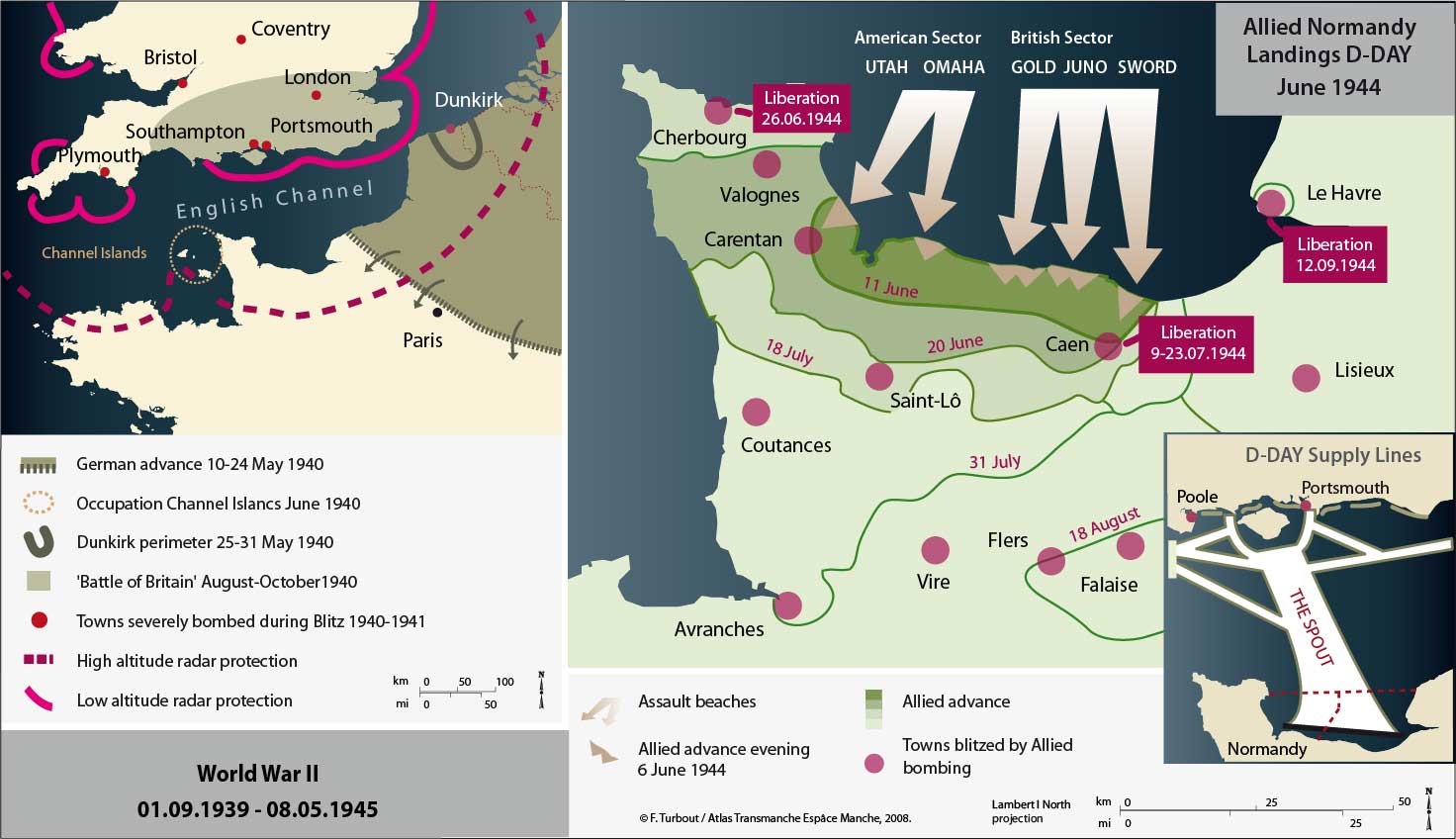

 Shared Histories
Shared Histories
The particular history of the 20th century, after several hundred years of prior conflict, has meant that the links between the two sides of the Channel are now much more than just those of commerce and trade, as important as the latter have rapidly become. In this, the trauma and shared memory of two world wars occupy a special place. Those who survived, and gave so much of themselves on these coasts of the old continent, have returned frequently, reviving and maintaining the memory. It does not end with those veterans, whose children and grandchildren keep coming; and it would be wrong to underestimate this continuing engagement. Since the Second World War, cross-Channel relations have multiplied for a huge number of people with the proliferation of town-twinnings, leading in turn to the establishment of more formal accords between towns, counties and departments.
|
Military losses: about 10 million people Civilian losses: about 8 million people Military wounded: over 20 million
France (and colonies): - about 1.37 million military (1.3) and civilian (0.4) deaths represented 4.3% of total population - over 4 millions military wounded
United Kingdom (and colonies): - about 1 million military (0.9) and civilian (0.1) deaths represented 2.2 % of total population - over 1.6 million military wounded |

|
Military losses: about 25 million people Civilian losses: about 45 million people
France (and colonies): - about 567 600 military (217 600) and civilian (350 000) deaths represented 1.35% of total population
United Kingdom (and overseas territories): - about 450 900 military (383 800) and civilian (67 100) deaths represented 0.94 % of total population
Invasion of Normandy : 6 June – 1st July 1944 Allied strength: 2 876 000 troops 70 000 killed or missing - 140 000 wounded Civilian population: 50 000 killed, wounded, or missing
D-Day: 6 June 1944 Allied strength:156 000 troops 10 600 killed, wounded, or missing; of which 3 000 British |
top













